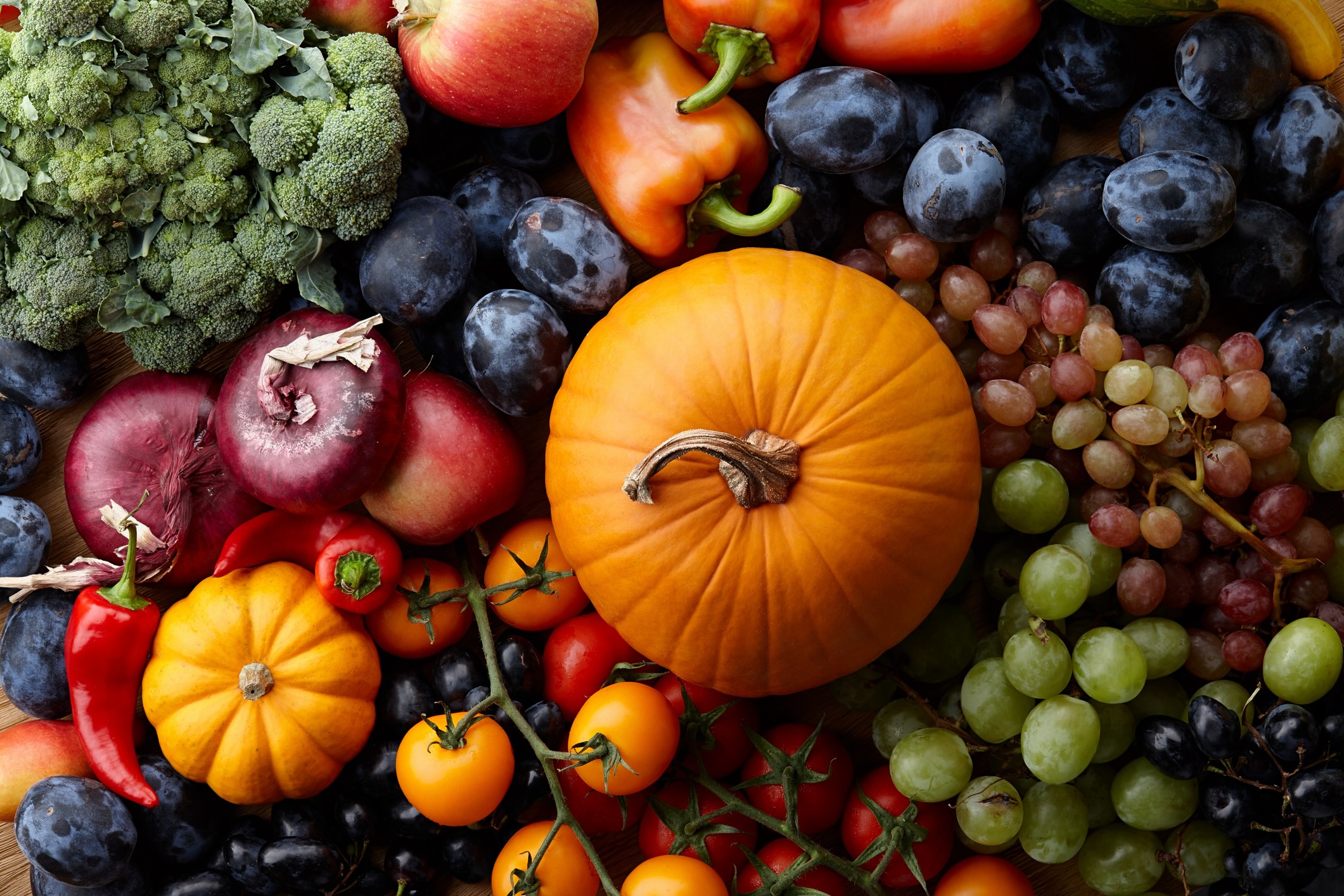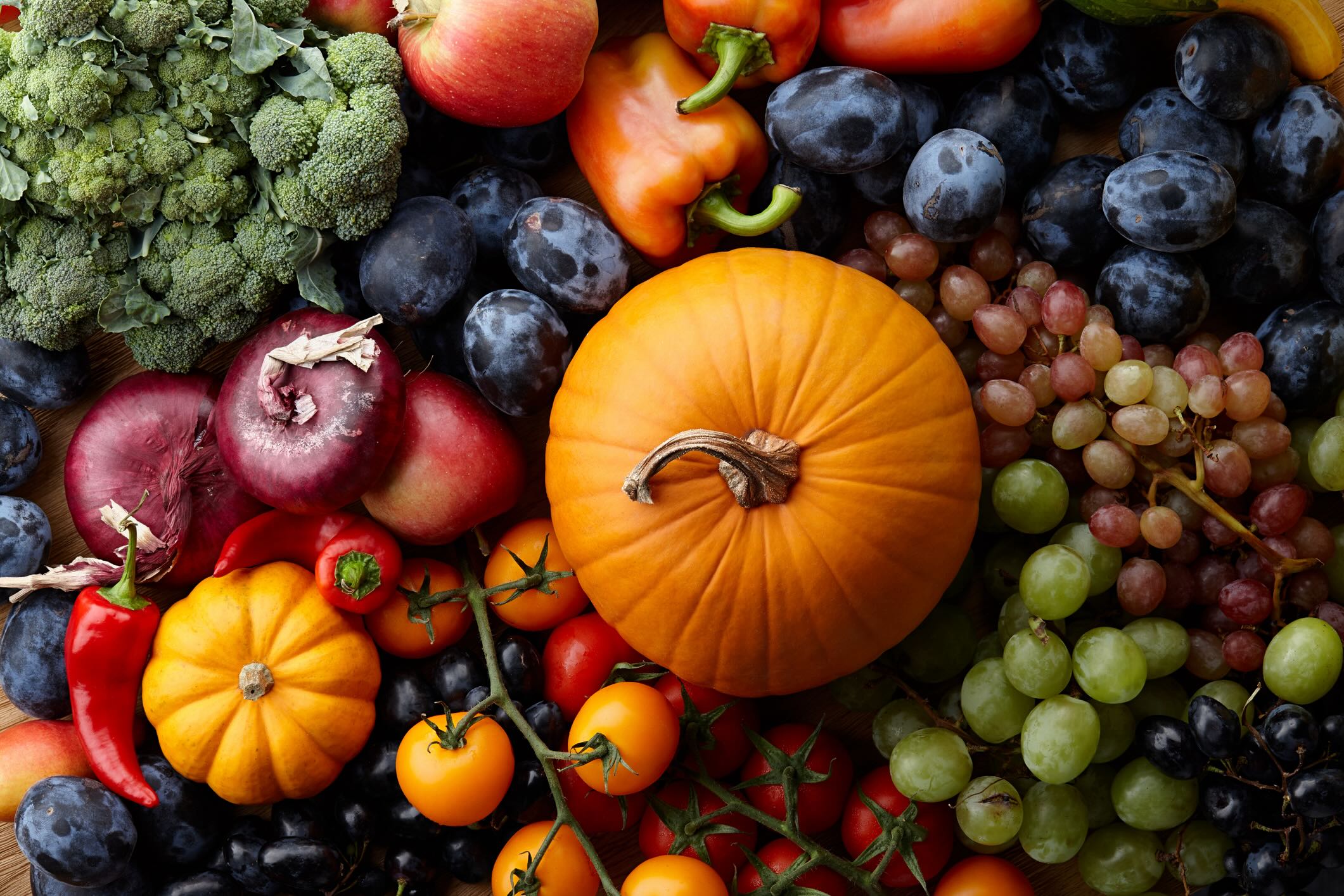Fall fruits and vegetables to support your cancer journey


Authored by: Ripsinder Arora, MS, RD, LD, registered clinical dietitian
As the season changes to fall, a bounty of colorful fruits and vegetables come into season, offering fresh, flavorful options that can benefit your cancer treatment journey. This season, watch for colorful delights like pumpkin, squash, apples, kale, sweet potatoes and more in your grocery store’s produce section. Not only do they add great flavor and value, but they also provide essential nutrients that can support your health during treatment.
Boost your health with beta carotene
Beta carotene is a plant pigment responsible for the vibrant red, orange and yellow colors in vegetables like carrots, pumpkin, squash and cantaloupe. Your body can convert beta carotene into vitamin A, which is crucial for healthy vision, organ function, immune support and reducing inflammation. Studies have also linked beta carotene to a decreased risk of certain cancers, including Hodgkin’s lymphoma and cervical, lung and bladder cancer.
Power up with cruciferous vegetables
Broccoli, Brussels sprouts, cauliflower, cabbage, and kale belong to the cruciferous vegetable family, known for their high nutrient content. These vegetables are packed with beta carotene, lutein, zeaxanthin, vitamins C, E, and K, folate, and essential minerals. They are also an excellent source of fiber. Research suggests that regular consumption of cruciferous vegetables can help lower the risk of lung, breast, colon and prostate cancers.
Cruciferous vegetables can be enjoyed in various ways, including raw in salads, roasted, stir-fried or added to soups and other dishes. However, some people may experience excess gas when eating these vegetables. To minimize this side effect:
- Cook vegetables thoroughly, but avoid overcooking; aim for a tender, al dente texture.
- Limit carbonated beverages and fatty foods when consuming cruciferous vegetables.
- Add ginger to your dishes, as it can help reduce digestive discomfort.
Immune-boosting fall foods
As the cooler months approach, it’s common for people to struggle with colds and other illnesses. This makes it even more important to boost your immune system, especially during cancer treatment. Incorporating these nutrient-dense foods into your meals can help keep you healthier throughout the season.
Fall offers a variety of immune-boosting fruits and vegetables:
- Citrus fruits (oranges, grapefruits, lemons) are rich in vitamin C, essential for enhancing immune function.
- Pumpkins, butternut squash and sweet potatoes are high in beta carotene, which supports skin and mucous membranes, which acts as a barrier against infections.
- Apples and pomegranates are loaded with antioxidants and vitamin C, aiding in immune defense.
- Dark leafy greens like kale and spinach provide vitamins A, C, and E and folate, which are crucial for immune health.
- Beets are another fall favorite. They provide essential nutrients like vitamin C, potassium and fiber to help strengthen the immune response.
Quinoa with Cauliflower and Broccoli Recipe
Here’s a delicious and nutritious recipe from the American Institute for Cancer Research that features fall vegetables. It’s easy to make and packed with cancer-fighting nutrients.
Ingredients:
- 2 tablespoons extra-virgin olive oil, divided
- 2 cups cauliflower florets
- 2 cups broccoli florets
- 1 medium green bell pepper, sliced into strips
- 1 medium red bell pepper, sliced into strips
- 1 cup chopped onion, divided
- 3 cloves garlic, minced
- 1 tablespoon fresh thyme, chopped (or 1 teaspoon dried)
- 1 tablespoon fresh oregano, chopped (or 1 teaspoon dried)
- 1 cup quinoa, well-rinsed and drained
- 2 cups fat-free, reduced-sodium vegetable broth
- Salt and freshly ground black pepper to taste
Directions:
- In a skillet, heat half of the olive oil over medium-high heat. Add cauliflower, broccoli, peppers, ½ cup onion, and garlic. Sauté for 5 minutes until vegetables start to soften. Stir in herbs and sauté for an additional 2 minutes. Remove from heat and set aside.
- Rinse the quinoa thoroughly under cold water for 2 minutes to remove its natural bitter coating. Drain and set aside.
- In a medium saucepan, heat the remaining oil over medium-high heat. Add the remaining onion and sauté for about 3 to 4 minutes. Add broth and quinoa. Increase heat to bring the mixture to a boil. Reduce heat to medium-low, cover, and simmer until the quinoa is tender, about 20 minutes.
- Gently stir in the vegetable mixture and combine well with the quinoa - season with salt and pepper to taste. Serve warm.
Nutritional Information (per serving):
- Calories: 120
- Total fat: 3.5 g (0 g saturated fat, 0 g trans fat)
- Cholesterol: 0 mg
- Carbohydrates: 20 g
- Protein: 5 g
- Dietary fiber: 3 g
- Sodium: 53 mg
- Sugar: 3 g (0 g added sugar)
This wholesome dish is delicious and offers a great way to incorporate cancer-fighting foods into your diet during the fall season. Enjoy these flavors as you nourish your body through treatment and beyond.

 Close
Close
